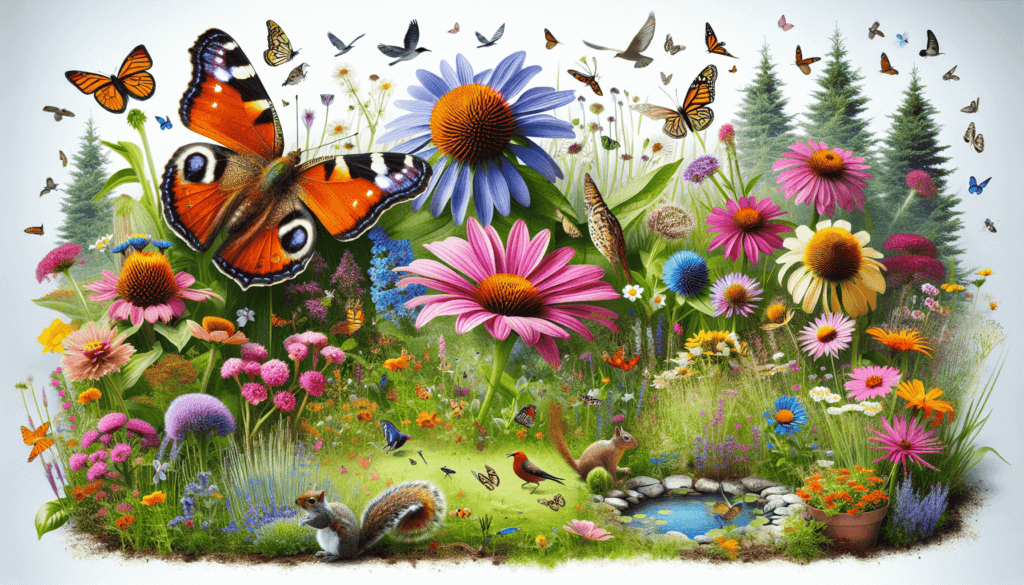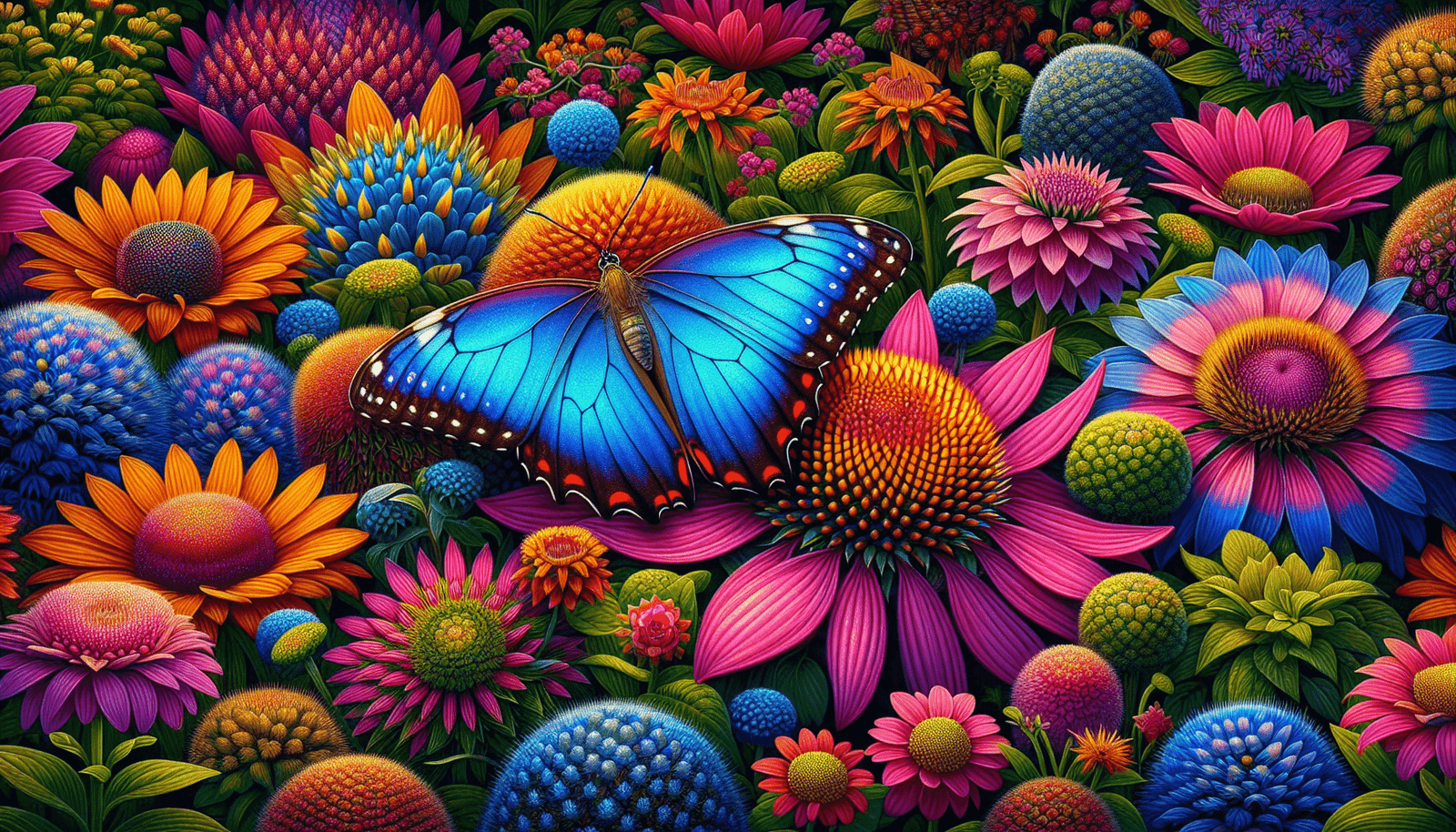Transform your garden into a vibrant ecosystem by maximizing biodiversity! In this article, you will discover easy and practical tips to create a haven for diverse plant and animal species in your very own backyard. From selecting a variety of native plants to providing habitats for beneficial insects and birds, you will learn how small changes can make a big impact on the overall health and vitality of your garden. Get ready to unleash the potential of your outdoor space as you embark on a fascinating journey to connect with nature and witness the beauty of biodiversity firsthand.
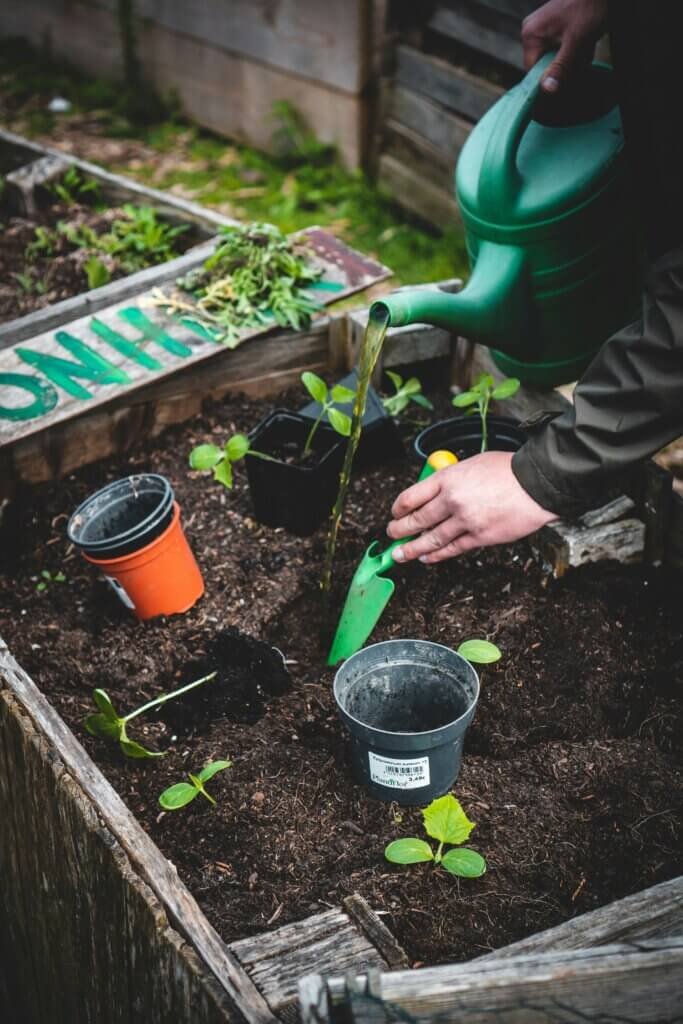
Choosing Native Plants
Choosing native plants for your garden is an excellent way to enhance biodiversity and create a harmonious natural environment. Native plants are species that occur naturally in your particular region, and therefore, they are perfectly adapted to the local climate, soil conditions, and wildlife. By selecting native plants, you are providing food and shelter for native insects, birds, and other wildlife, while also promoting the overall health and resilience of your garden ecosystem.
Benefits of Native Plants
There are numerous benefits to incorporating native plants into your garden. One of the primary advantages is their ability to support local wildlife. Native plants have co-evolved with local wildlife over many years, meaning they provide essential food sources, nesting sites, and shelter for native birds, butterflies, bees, and other beneficial insects. By choosing native plants, you are facilitating the survival and reproduction of these important pollinators and natural pest controllers.
Native plants are also well-suited to local environmental conditions, requiring less water, fertilizer, and maintenance compared to non-native species. This makes them not only cost-effective but also more environmentally friendly. Additionally, native plants contribute to soil health by improving its structure, preventing erosion, and enhancing water infiltration. Their deep root systems also help to capture and store carbon, mitigating the effects of climate change.
Researching Native Plants
Before selecting which native plants to incorporate into your garden, it is essential to conduct thorough research. Start by familiarizing yourself with the native plant species that are native to your region. Explore local botanical gardens, nurseries, and online resources to identify species that are well-suited to your specific soil type, sunlight exposure, and climate conditions. Take note of the plant’s growth habits, maintenance requirements, and potential benefits to wildlife.
You can also consult with local gardening experts, conservation organizations, or native plant societies to gain insights and recommendations tailored to your specific location. They can provide valuable advice on plant selection, cultivation techniques, and ongoing maintenance.
Selecting Native Plants
When it comes to selecting specific native plants for your garden, aim for a diverse mix of species that will provide year-round interest and meet the needs of different wildlife. Choose a variety of plants with different heights, textures, and bloom times to create a visually appealing and ecologically vibrant garden.
Consider selecting native trees and shrubs as the backbone of your garden design. These woody plants not only provide shade, structure, and shelter but also serve as host plants for various insects and birds. Incorporate a mix of perennials and annuals to add color and attract pollinators throughout the growing season. Groundcovers and climbers can be used to fill in gaps and create a lush vegetation cover, further enhancing biodiversity.
When selecting native plants, prioritize species that are not invasive and will not overtake your garden or surrounding natural areas. Invasive species can undermine the biodiversity you are seeking to promote, negatively impacting native plant communities and wildlife habitat.
Creating a Wildlife-Friendly Habitat
Creating a wildlife-friendly habitat in your garden is a rewarding endeavor that allows you to observe and enjoy the beauty of nature up close. By providing food sources, shelter, and water features, you can attract a wide range of birds, butterflies, bees, and other wildlife, effectively transforming your garden into a bustling haven of biodiversity.
Providing Food Sources
Providing a variety of food sources is crucial for attracting wildlife to your garden. Incorporate plants that produce nectar-rich flowers to attract pollinators such as bees and butterflies. Native wildflowers, flowering shrubs, and perennials like coneflowers, bee balm, and milkweed are excellent choices. These plants not only provide nectar but also serve as host plants for caterpillars, an essential food source for many butterflies.
Consider planting native fruit-bearing trees and shrubs such as dogwood, elderberry, or hawthorn. These plants provide berries and fruits that are highly beneficial to birds, especially during the winter months when food sources may be scarce. Additionally, leaving a portion of your garden unmanicured or allowing certain plants to go to seed will offer a natural food source for birds and small mammals.
Offering Shelter and Nesting Sites
Creating shelter and nesting sites in your garden will attract a variety of wildlife, offering them a safe place to rest, hide, and raise their young. Incorporate native trees and shrubs with dense foliage and branching structures to provide a natural habitat for birds. Trees such as oak, pine, and maple, and shrubs like serviceberry and viburnum, offer excellent nesting opportunities.
To attract butterflies, consider incorporating specific host plants that caterpillars feed on and lay their eggs. For example, milkweed is the sole food source for monarch butterfly larvae, while dill and fennel are preferred by swallowtail butterflies. By planting these host plants, you are providing crucial habitat for these specific butterfly species.
Including deadwood, fallen branches, or log piles in your garden can also provide valuable shelter and habitat for a variety of insects, amphibians, and small mammals. These natural features create hiding spots, nesting sites, and overwintering habitats for many beneficial organisms.
Including Water Features
Water features are not only aesthetically pleasing but also essential for attracting and supporting a diverse range of wildlife. Installing a pond or water garden can create a valuable aquatic habitat for frogs, toads, dragonflies, and other water-loving species. Ensure that the pond has varying depths and incorporates rocks and plants around the edges to provide shelter and basking spots for amphibians and insects.
In addition to larger water features, smaller options like bird baths or shallow water dishes can attract birds, butterflies, and bees that require a water source for drinking and bathing. Be sure to keep the water clean and fresh and place the bird baths in a safe location, preferably near vegetation or trees where birds can seek cover when needed.
Creating a rain garden is another excellent way to integrate water into your garden while aiding in water conservation and managing stormwater runoff. A rain garden consists of native plants that are specifically chosen for their ability to absorb excess water, reducing erosion and filtering pollutants before they reach natural water sources.
Implementing Organic Gardening Practices
Implementing organic gardening practices is not only beneficial for your garden but also for the environment as a whole. By avoiding pesticides and herbicides, using natural fertilizers, and practicing composting and mulching, you can create a healthy and sustainable garden ecosystem.
Avoiding Pesticides and Herbicides
Pesticides and herbicides can be harmful to both the targeted pests and the beneficial insects and wildlife in your garden. Instead of relying on chemical-based solutions, seek out organic pest control methods. Encourage natural pest control by attracting beneficial insects like ladybugs, lacewings, and praying mantises to your garden. These insects act as natural predators, feeding on harmful pests and minimizing the need for chemical sprays.
Using Natural Fertilizers
Fertilizers play a crucial role in providing essential nutrients to your plants. Opt for natural fertilizers such as compost, well-rotted manure, or organic fertilizers derived from plant or animal sources. These natural options enrich the soil without introducing harmful chemicals and are more sustainable in the long run. Additionally, using organic fertilizers helps promote healthy soil microbial activity, improving the overall fertility and resilience of your garden.
Composting and Mulching
Composting is an excellent way to recycle kitchen scraps and yard waste, transforming them into nutrient-rich soil amendments. Set up a compost bin or pile in a designated area of your garden and add kitchen scraps, leaves, grass clippings, and other organic materials. Regular turning and proper moisture levels will accelerate the decomposition process, creating nutrient-dense compost that can be used to improve soil health and feed your plants.
Mulching is another essential practice that helps conserve moisture, suppress weed growth, and improve soil fertility. Apply a layer of organic mulch, such as wood chips, straw, or leaf litter, around your plants to regulate soil temperature and retain moisture. Mulch also acts as a natural weed barrier, reducing the need for herbicides and manual weed removal.
Integrating Different Layers
Integrating different layers of vegetation in your garden is a key strategy for maximizing biodiversity and creating a visually appealing landscape. By including trees and shrubs, perennials and annuals, as well as groundcovers and climbers, you can create a multi-dimensional garden that supports a wide range of wildlife.
Planting Trees and Shrubs
Trees and shrubs provide structure, shade, and vertical interest to your garden while creating valuable habitats and food sources for wildlife. Select native tree species that are well-suited to your climate and site conditions. Large trees like oaks and maples are particularly beneficial as they can provide food and shelter for a diverse array of organisms, including insects, birds, and mammals.
Shrubs, on the other hand, offer a lower-growing alternative that can be utilized in borders, hedges, or as focal points in your garden. Choose shrubs that produce berries or have flowers that attract pollinators. Examples include serviceberry, viburnum, and elderberry, all of which provide food sources and nesting opportunities for wildlife.
Choosing Perennials and Annuals
Perennials and annuals are the backbone of any vibrant garden, adding color, texture, and seasonal interest. Native perennials are highly recommended for their ability to attract pollinators, withstand local weather conditions, and require less maintenance. Consider plants such as coneflowers, black-eyed Susans, or butterfly weed, which provide beautiful blooms and support a variety of bees, butterflies, and other beneficial insects.
Annuals, while not as long-lasting as perennials, offer the opportunity to experiment with different color combinations and fill in gaps in your garden. Select native annuals like California poppies, zinnias, or marigolds, which provide abundant blooms and attract pollinators throughout the growing season.
Including Groundcovers and Climbers
Groundcovers serve as a living mulch, covering bare soil, preventing erosion, and suppressing weed growth. They also provide valuable habitat for ground-dwelling insects and small mammals. Choose native groundcovers that are well-suited to your soil and light conditions. Examples include creeping thyme, violets, or vinca, depending on your specific region.
Climbers, such as native vines or climbing roses, can be trained to grow up trellises, fences, or walls, adding vertical interest to your garden. These climbers not only create an enchanting visual effect but also serve as nesting sites and food sources for birds and insects.
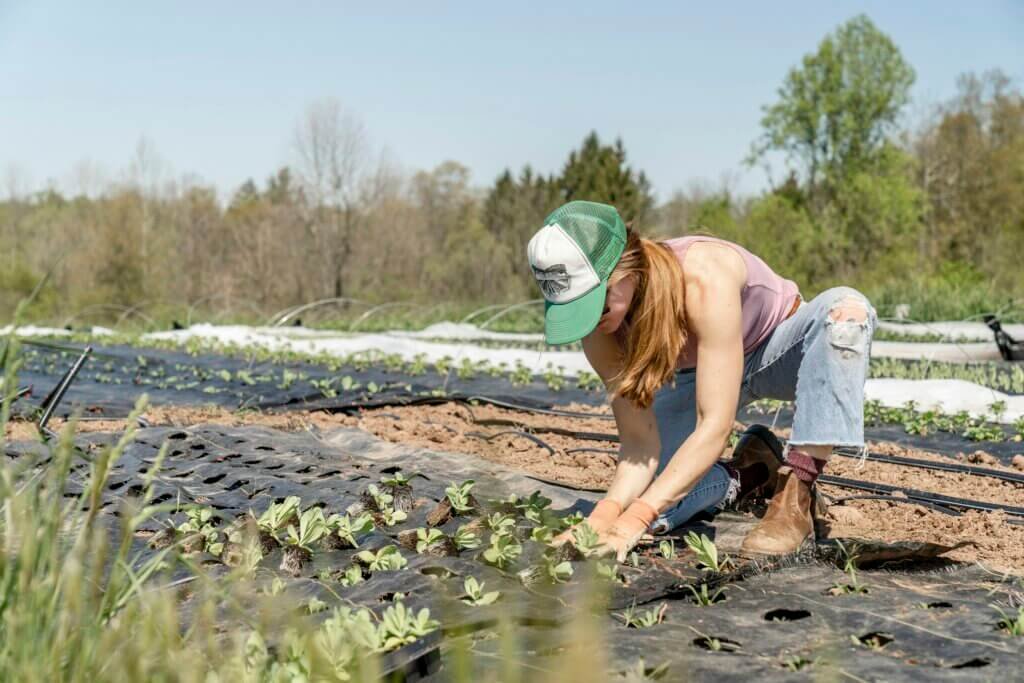
Adding Water Elements
Adding water elements to your garden is not only visually appealing but also essential for attracting and supporting a wide array of wildlife. Here are some ideas to consider:
Building a Pond or Water Garden
Building a pond or water garden is a wonderful way to invite aquatic life and create an oasis for various plants and animals. Ponds can support a diverse range of species, including amphibians, dragonflies, turtles, and aquatic plants. Ensure your pond has different depths, provide rocks or logs as resting spots, and incorporate native aquatic plants to enhance the natural beauty and functionality.
Installing Bird Baths or Water Dishes
Bird baths or shallow water dishes are simple yet effective features for attracting birds to your garden. Birds need water for drinking and bathing, and by offering a water source, you are providing an essential resource. Place the bird baths in a safe location, preferably near vegetation or trees where birds can seek cover when needed. Remember to clean and refill the bird baths regularly to maintain water quality.
Creating a Rain Garden
A rain garden is a planted depression designed to capture and absorb stormwater runoff. By directing water runoff from your roof or other paved surfaces into a rain garden, you can reduce erosion, filter pollutants, and recharge groundwater. Additionally, rain gardens can attract a wide range of wildlife, including frogs, dragonflies, and butterflies. Choose native plants that can tolerate both wet and dry conditions to establish a thriving rain garden.
Attracting Pollinators
Pollinators play a vital role in the reproduction of plants and the overall health of ecosystems. By creating a pollinator-friendly garden, you can help support these important creatures and ensure the long-term survival of many plant species.
Planting Pollinator-Friendly Flowers
To attract and provide sustenance for pollinators, incorporate a wide variety of flowers with different shapes, sizes, and bloom times in your garden. Native wildflowers, such as milkweed, coneflowers, bee balm, and asters, provide nectar-rich blooms that attract bees, butterflies, and hummingbirds. Aim for a continuous succession of flowering plants throughout the growing season to ensure a steady food source for pollinators.
Including Host Plants for Caterpillars
In addition to nectar-rich flowers, it is essential to include host plants that caterpillars feed on. Many butterfly species have specific plant species that they rely on as larval hosts. For instance, monarch butterflies exclusively lay their eggs on milkweed plants, while swallowtail butterflies prefer host plants like dill or fennel. By incorporating these host plants into your garden, you are providing habitat and food sources for these fascinating insects.
Avoiding Chemical Pesticides
Chemical pesticides can harm pollinators and disrupt the delicate balance of your garden ecosystem. Instead, opt for natural pest control methods and encourage a diverse range of beneficial insects, such as ladybugs and lacewings, which feed on harmful pests. By avoiding chemical pesticides and herbicides, you are creating a safer environment for pollinators and promoting a healthy garden ecosystem.
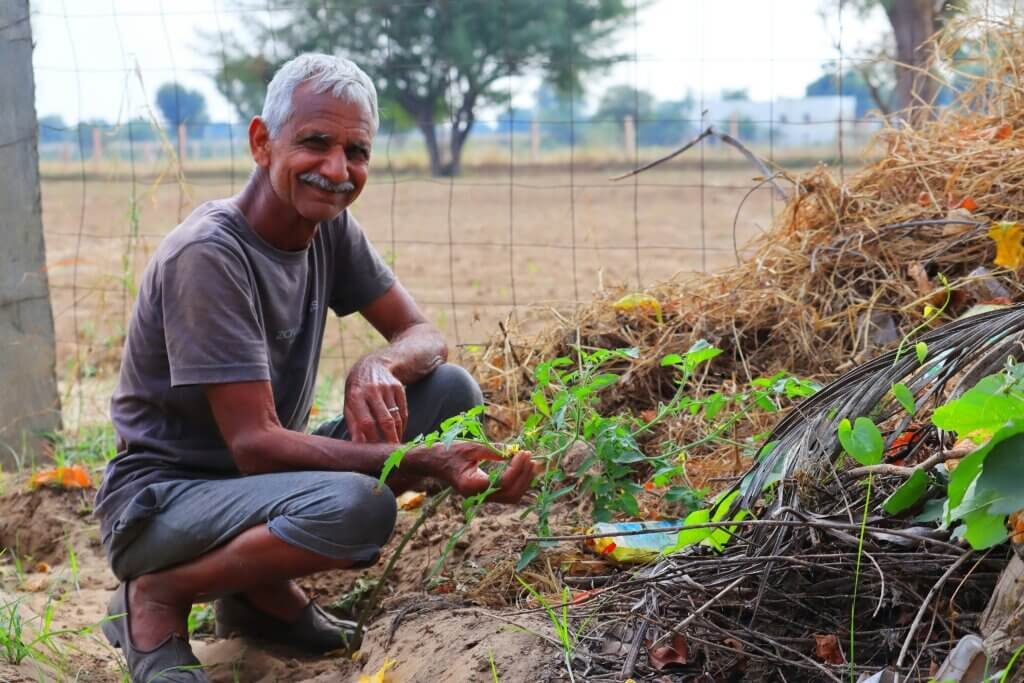
Encouraging Beneficial Insects and Wildlife
Beneficial insects and wildlife are crucial components of a thriving garden ecosystem. By providing suitable habitats and resources, you can attract these natural pest controllers and enhance the overall biodiversity of your garden.
Using Insect Hotels and Bee Boxes
Insect hotels and bee boxes are specially designed structures that provide shelter and nesting opportunities for beneficial insects and solitary bees. These structures can be made from various materials, such as hollow stems, wooden blocks with drilled holes, or bundles of sticks and twigs. Place them in a sunny location in your garden, away from strong winds, to attract a diverse range of beneficial insects, including predacious wasps, solitary bees, and ladybugs.
Providing Bat Houses
Bats are fantastic pest controllers, consuming vast amounts of insects each night. By installing a bat house in your garden, you can provide these valuable creatures with a safe place to roost and raise their young. Choose a location that receives several hours of direct sunlight and is at least 12 feet off the ground. Bats are particularly attracted to houses near water sources since they provide an abundant food supply.
Allowing Natural Pest Control
One of the best ways to encourage beneficial insects and wildlife is simply by allowing nature to take its course. Avoid excessive pruning and tidying up your garden, as many beneficial insects overwinter in garden debris and rely on undisturbed habitats for shelter and reproduction. Embrace the presence of spiders, ladybugs, and other predators that naturally help control pests. By promoting natural pest control, you create a balanced ecosystem where pests are kept in check without the need for harmful chemicals.
Creating Microhabitats
Microhabitats are small-scale environments that offer unique conditions and resources for a range of wildlife species. By incorporating microhabitats into your garden, you can attract a greater diversity of animals and enhance the overall ecological value of your space.
Building Rockeries or Stone Walls
Rockeries or stone walls provide nooks and crevices that offer shelter, nesting sites, and basking spots for various creatures. Rocks can provide warmth, absorb and radiate heat, and create distinct microclimates. Be mindful of using locally sourced rocks to ensure they are ecologically appropriate for your area. Arrange the rocks in a natural-looking formation, leaving gaps and crevices for animals to explore and inhabit.
Designing a Butterfly Garden
Butterfly gardens are designed specifically to attract and support these delicate and beautiful insects. Choose a sunny location in your garden and incorporate nectar-rich flowers, host plants for caterpillars, and shallow puddling areas for drinking. Provide sheltered areas with windbreaks or tall vegetation where butterflies can rest and seek protection from predators.
Planting Hedgerows or Thickets
Hedgerows or thickets are dense, shrubby areas that act as valuable wildlife corridors, providing food, shelter, and nesting opportunities for a wide variety of animals. Choose native shrubs and plants with varying heights and different flowering and fruiting times to maximize their appeal to different species. Hedgerows can also act as windbreaks, privacy screens, and noise buffers, further enhancing the usability and ecological value of your garden.
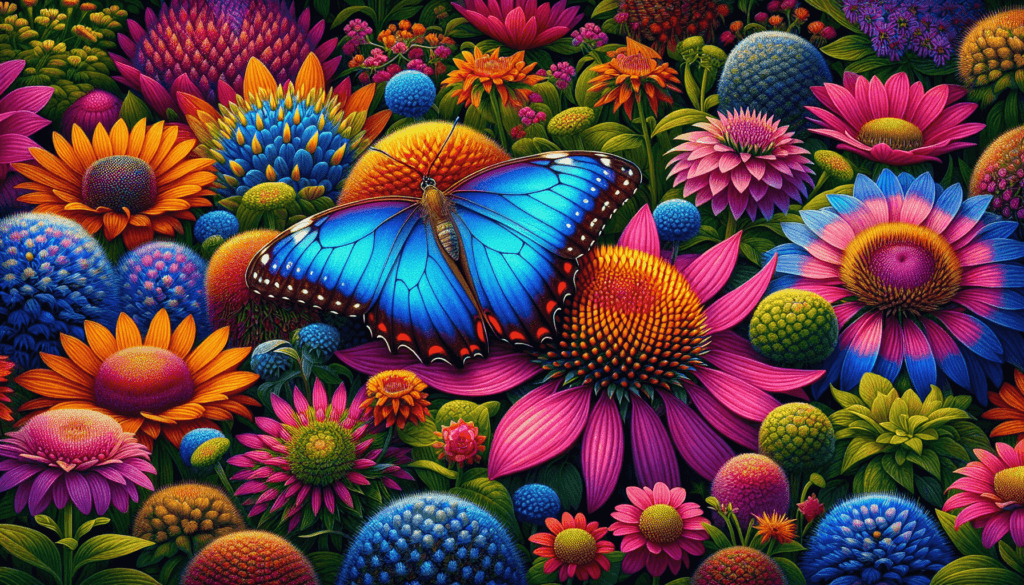
Maintaining Year-Round Interest
Maintaining year-round interest in your garden not only provides visual enjoyment but also ensures a consistent supply of resources for wildlife throughout the seasons. By choosing plants with different blooming seasons, incorporating winter berries and foliage, and adding ornamental grasses, you can create a dynamic garden that offers beauty and sustenance year-round.
Choosing Plants with Different Blooming Seasons
Selecting plants with different blooming seasons is key to maintaining a continuous supply of nectar and pollen for pollinators. Consider early-flowering plants like snowdrops and crocuses for the spring, vibrant summer blooms such as cone flowers and black-eyed Susans, and late-blooming asters and goldenrods for the fall. This diverse range of flowering plants will not only provide a feast for pollinators but also add color and interest to your garden throughout the year.
Including Winter Berries and Foliage
Winter berries and foliage are essential food sources for birds and other wildlife during the colder months when insects and nectar become scarce. Choose native shrubs and trees that produce berries or have persistent foliage. Species like holly, winterberry, and cotoneaster offer vibrant berries, while evergreen plants like pine, cedar, or juniper provide year-round cover and shelter.
Adding Ornamental Grasses
Ornamental grasses add texture, movement, and resilience to your garden landscape. Many grasses retain their form and provide interest even during the winter months. Their flowing foliage and seed heads create attractive silhouettes and provide seeds and nesting material for birds. Select native grasses like switchgrass, little bluestem, or muhly grass to enhance both the aesthetic appeal and ecological value of your garden.
Designing for Biodiversity
Designing your garden with biodiversity in mind is crucial for creating a thriving and harmonious environment. By using different plant heights and structures, creating varying microclimates, and implementing companion planting techniques, you can enhance biodiversity within your garden ecosystem.
Using Different Plant Heights and Structures
Incorporating plants of varying heights and structures helps create a more visually interesting and ecologically diverse garden. Taller plants, such as trees and shrubs, provide shade, canopy cover, and vertical structure while creating habitat for birds and insects. Understory plants, such as ferns or shade-loving perennials, occupy the middle layers, providing additional foliage and hiding spots. Finally, groundcovers and low-growing plants, such as creeping thyme or native grasses, fill in the lower layers, adding texture and preventing soil erosion.
Creating Varying Microclimates
Microclimates are small-scale areas within your garden that have unique temperature, light, and moisture conditions. By strategically placing plants, structures, and features, you can create a range of microclimates to accommodate different species’ preferences. For example, planting moisture-loving plants near a water feature or placing heat-loving plants in a sunny, sheltered spot. These microclimates mimic natural habitat conditions, attracting a greater diversity of wildlife.
Implementing Companion Planting
Companion planting is the practice of grouping plants together based on their mutually beneficial relationships. Certain plants, when grown together, provide natural pest control, improved soil fertility, and increased disease resistance. For example, planting marigolds near tomatoes can deter aphids, while interplanting beans and corn can enhance nitrogen fixation in the soil. By implementing companion planting techniques, you can create a harmonious and productive garden ecosystem.
In conclusion, maximizing biodiversity in your garden is not only beneficial for wildlife but also a rewarding and enriching experience for you as a gardener. By choosing native plants, creating wildlife-friendly habitats, implementing organic gardening practices, integrating different layers, adding water elements, attracting pollinators, encouraging beneficial insects and wildlife, creating microhabitats, maintaining year-round interest, and designing for biodiversity, you can transform your garden into a vibrant and sustainable haven for a multitude of species. Embrace the beauty of nature and embark on a journey to maximize biodiversity in your garden today!
